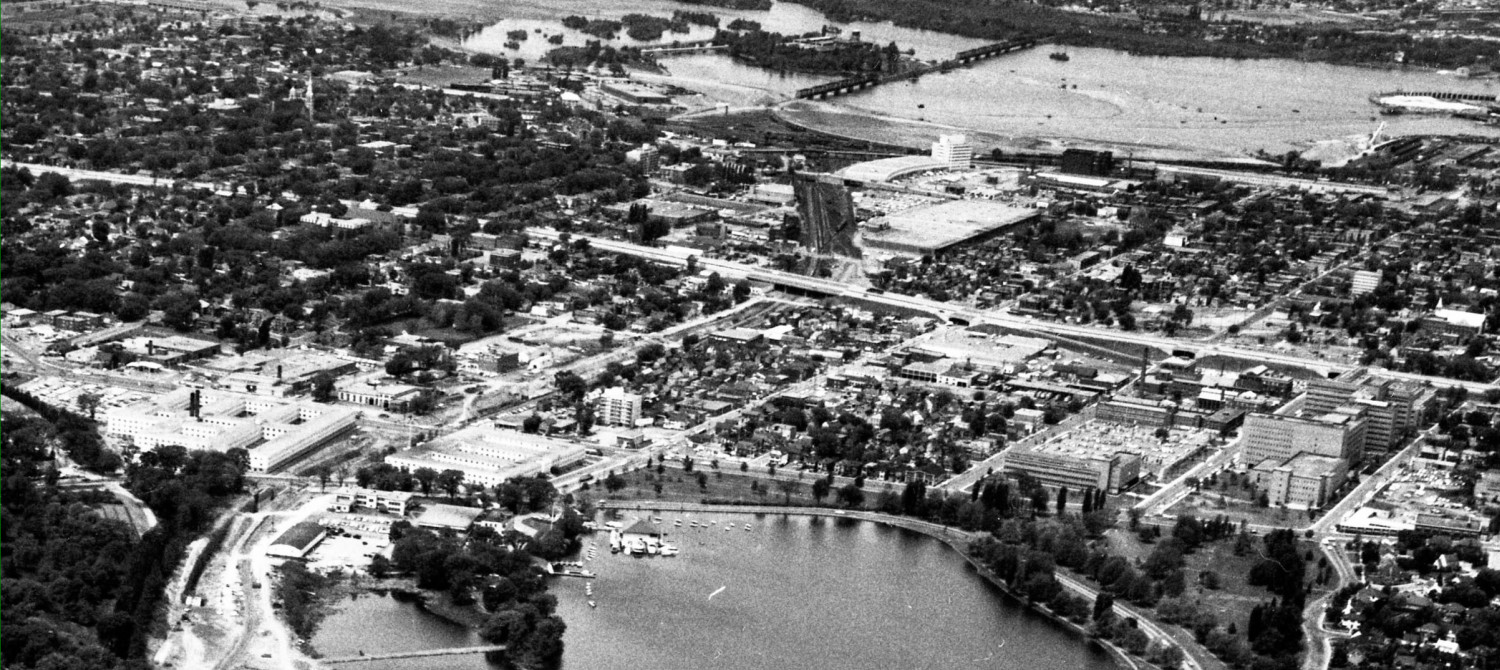Friday’s Ottawa Citizen had a story about proposed changes to Bronson Avenue at the Canal, scene of a fatal cyclist-motorist collision last year. I didn’t see any mention of a program to address similar bits of bad road planning that proliferate in this City. Do we have to kill more cyclists to get more fixes?
The proposed changes to Bronson are welcome. They may even “solve” the problem on this stretch of Bronson. I use the word solve rather loosely. In fact, these measures address the most egregious problems in this one stretch of road.
All these measures are small steps forward, and we must be grateful for what progress we can get. Incrementalism does work, it just takes a long time. And during that long time, more cyclists and pedestrians will get clobbered at similar dangerous roads throughout the region.
Bronson is not an isolated bit of bad road that was unforeseen It is the result of years and years of deliberate road design. Those designs were to move as many cars as possible, as quickly as possible. To do it safely, road engineers borrowed those safety measures that science showed worked for highways: brighter lighting, wider straighter pavements, run-off or recovery zones at the sides where motorist errors could be forgiven and when these zones were not in use, could cheaply be employed to move cyclists and pedestrians.
Then remaining pedestrians are directed to stand at intersections at the very same spots where the engineers decided putting a fixed post is too dangerous, but hey, humans are soft.
We all know the results: traffic moves too fast, out of touch with its surroundings. The latest moves — some of which are not being suggested for Bronson — involve putting curves back into roads, closing them in on the sides with vegetation and height changes, closing in the “fourth surface” (the overhead space) and generally reducing the invitation to go faster. Bronson is getting some good fixes, like eliminating “merge” lanes and acceleration/deceleration lanes in favour of signalized intersections. The pickets along the bike lanes might make the road seem a bit narrower. Once the results are in, traffic surveys should be able to measure our success in slowing traffic and making the area safer.
Now, what about where the MacDonald Parkway (aka the Ottawa River Parkway, or the Ottawa River Commuter Expressway) where it debouches onto Carling? The design of Carling in this area invites cars to go faster. The Parkway entrances and exits are like freeway ramps. It would be dead easy to modify these to be a four way signalized intersection, but will it take another death before we look at this intersection?

Or the many other intersections with the same design. Take a look at all the urban-area freeway on and off ramps along the Queensway, horrors like at Woodrooffe or Greenbank.
We don’t need to fix Bronson Avenue. We need a program to prioritize the worst urban “interchanges” and fix them, several per year, instead of one at a time as a cyclist or pedestrian is killed.
When Council passes the Bronson recommendations work order, I hope Councillor Chesnushenko is right there with a motion to direct engineering to come with a work program for the other bad intersections.



It’s almost like we need to ritually sacrifice cyclists to the motor gods to appease them.
If the intersection at ORP and the Carling was signalized that would free up large chunks of land right by a transitway station. Those locations ought to be developed in a transit oriented fashion. Unfortunately I bet the NCC will feel it’s more in keeping with its mandate for it to remain a clump of bushes.
I’d like to see improvements at ORP-Carling, but not a signalized intersection. On the north side, the ped crossings are separated, reducing the width and simplifying the situation for peds crossing the east-to-north traffic and the south-to-west traffic. And pedestrians are very visible in forward of drivers from quite a distance. And drivers start their turns into the curve before the ped crossing so they’re already slowing down.
But on the south side the traffic entering the parkway is crossing the path of pedestrians very close to the roadway. It somehow seems less safe, and more like a race. That lack of spacial separation between the ped crossing and Carling is also evident for traffic exiting the parkway onto Carling. I’ve never been a pedestrian there but as a driver it bothers me. You’re crossing a ped path while trying to plan your merge into traffic. Better to just merge the entry/exit into one right-angle intersection with a stop sign for traffic entering Carling and a ped crossing sign (permanently on the white walking man) visible to cars exiting Carling.